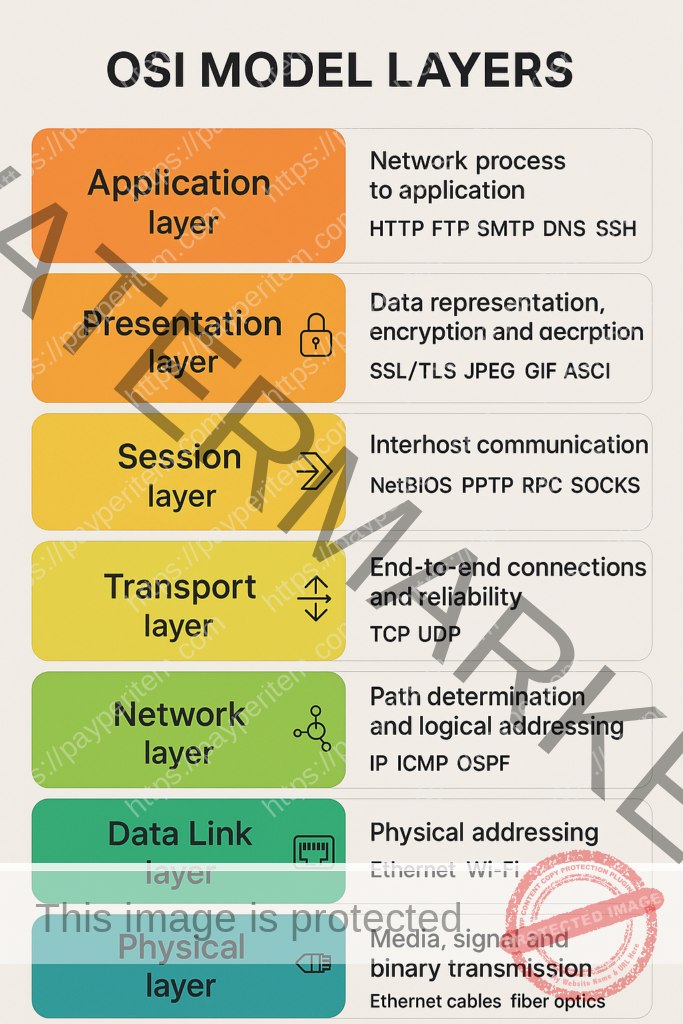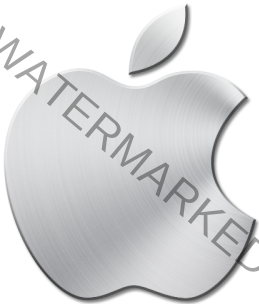The OSI (Open Systems Interconnection) Model is a conceptual framework used to understand and standardize network communication. It consists of seven layers, each with distinct roles in the process of data transmission.
OSI Model Layers Overview
- Physical Layer (Layer 1)
- Deals with hardware, signals, and physical connections.
- Transmits raw bits (0s and 1s) over cables, radio waves, or optical fibers.
- Examples: Ethernet cables, fiber optics, radio waves (Wi-Fi, Bluetooth).
- Devices: Hubs, repeaters, network interface cards (NICs).
- Data Link Layer (Layer 2)
- Provides error detection and correction for the physical layer.
- Handles MAC (Media Access Control) and LLC (Logical Link Control).
- Examples: Ethernet (IEEE 802.3), Wi-Fi (IEEE 802.11).
- Devices: Switches, bridges, NICs.
- Network Layer (Layer 3)
- Manages routing of data packets between different networks.
- Uses logical addressing (IP addresses) to find paths.
- Examples: IP (IPv4, IPv6), ICMP, OSPF, BGP.
- Devices: Routers, Layer 3 switches.
- Transport Layer (Layer 4)
- Ensures reliable or unreliable data delivery using protocols like TCP and UDP.
- Handles flow control and segmentation.
- Examples: TCP (reliable), UDP (fast but unreliable).
- Devices: Firewalls, load balancers.
- Session Layer (Layer 5)
- Manages sessions and connections between applications.
- Responsible for session initiation, maintenance, and termination.
- Examples: NetBIOS, PPTP, RPC, SOCKS.
- Presentation Layer (Layer 6)
- Handles data formatting, encryption, and compression.
- Ensures compatibility between different data representations.
- Examples: SSL/TLS, JPEG, GIF, ASCII, MP3.
- Application Layer (Layer 7)
- Provides network services directly to user applications.
- Defines protocols for emails, web browsing, and file transfers.
- Examples: HTTP, FTP, SMTP, DNS, SSH.

